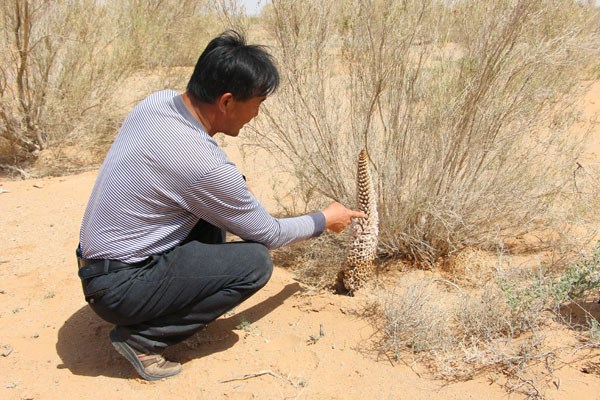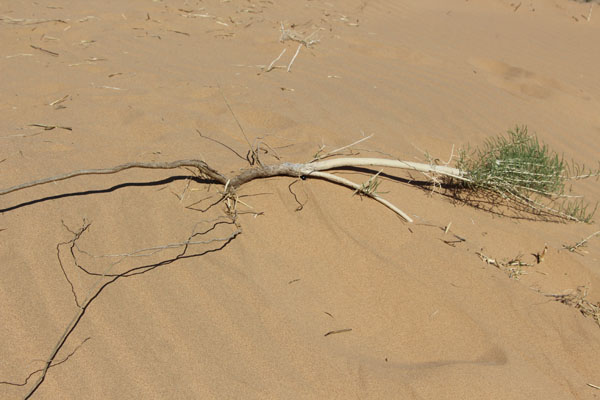
Walking into Hu Kaijing's brick house, a pair of swallows twittering on the ceiling surprised me. Hu said it is thanks to a plant called suosuo that I could see the migratory birds at his home.
Hu is a herdsman in Suhaitu Gacha (Gacha means village in the Mongolian) in Alax League in west Inner Mongolia autonomous region. The village is bordered by the Tengger Desert to the south and Ulan Buh Desert to the east.
"In the 1980s when I was young, this (Suhaitu) was a prairie," Hu said. "But the grasslands degraded in the 1990s and gradually turned into desert due to overgrazing. Sandstorms became a headache for us."
"As a result of the deteriorated grasslands, we herdsmen had to buy grass from outside to feed the livestock and thus the costs were very high," Hu said.
He once possessed more than 500 sheep, but as the grasslands degraded and costs for raising herds rose, Hu was forced to quit raising livestock and make his living through other means. He became a truck driver.
The worsening environment also took other tolls. "As the environment deteriorated, the number of animals, such as the swallow and rabbit, decreased," Hu said.
The predicament facing Suhaitu is not unique in China. By 2014, one fourth of the country's lands were desertified areas - mainly in Xinjiang Uygur autonomous region, Inner Mongolia autonomous region and Gansu province in Northwest China, according to statistics from the National Forestry Bureau.
As part of a national effort to reverse desertification, Alxa League government in 2002 implemented a policy that bans grazing to recover grassland.
In 2010, Hu started planting suosuo, a plant that is commonly seen in the desert.
Suosuo's roots can grow two or three times the length of its parts above ground, which enables it to reach water deep underground, said Li Zhiyuan, a desert prevention and control expert.
He said one suosuo tree can stablize 10 square meters of sand.
As tough a plant as suosuo is, surviving in the desert is not easy. A sandstorm can easily bury a newly planted tree. So a sand barrier made of hay or twigs is laid on the ground to fix the sand and protect young trees.
Hu receives a subsidy from the local government for planting suosuo, and also gets technological support from the Alxa Society of Entrepreneurs and Ecology (SEE), a nongovernmental organization committed to preventing desertification.
Hu has planted more than 666 hectares of suosuo on his lands, which effectively prevents the desert's invasion and also brings economic benefits because of a special parasite, congrong, that grows on suosuo roots.
Congrong has a long history of being used as an herb to treat male sexual dysfunction. Dried congrong is sold for more than 200 yuan ($30.6) a kilogram, and its seed is priced at 20,000 yuan a kilogram.
Hu Kaijing earned more than 200,000 yuan last year from the sales of congrong, much higher than his income from sheep farming.
Many villagers followed Hu's example and planted suosuo. More than 17,000 hectares have been cultivated in the village.
"The environment has greatly improved, and we can see more animals, such as swallows, coming back," said Hu.
"Through the planting of 100 million suosuo trees, we aim to build a green barrier in Alax League, thus preventing the encroachment of desert while improving the livelihood of local herders," Feng Furong, an SEE employee, said.
SEE was founded by a group of entrepreneurs in 2004. In 2014, SEE proposed to plant 100 million suosuo in 10 years in areas threatened by encroaching desert in Alxa League.



















































